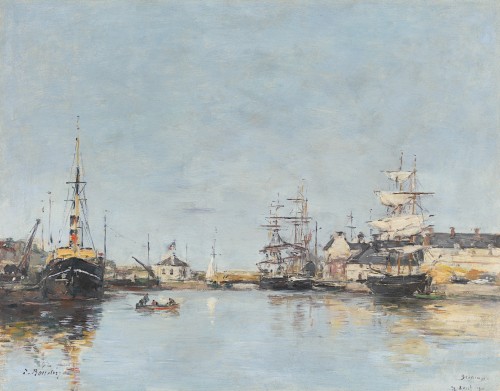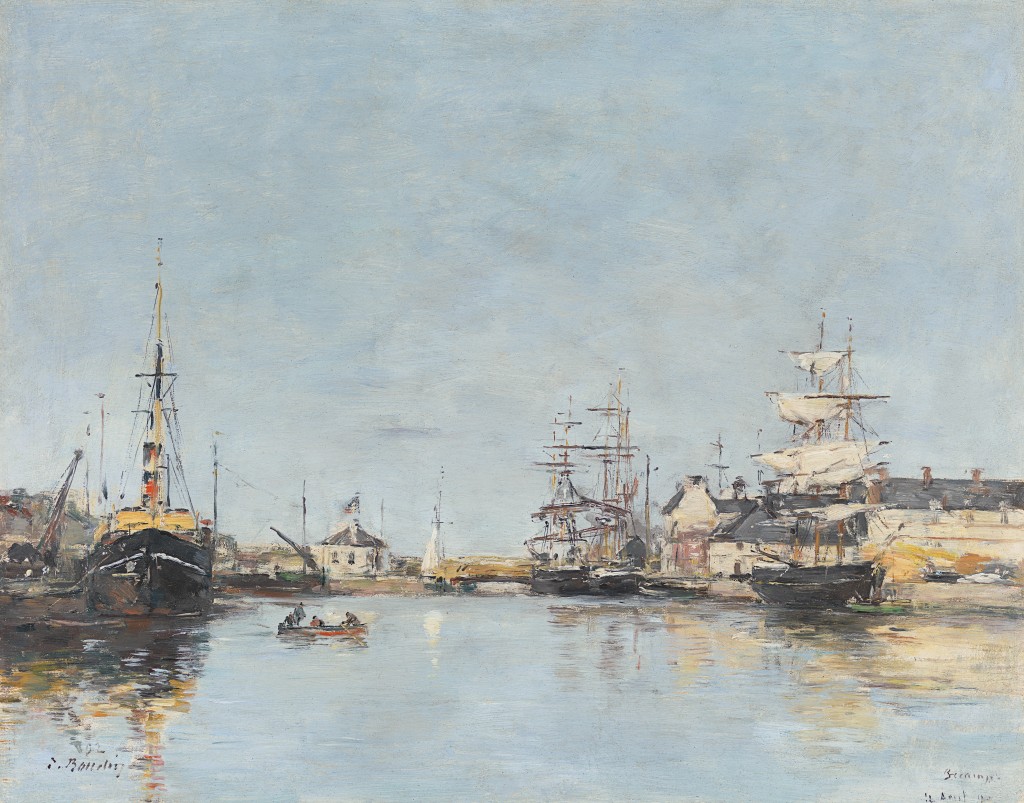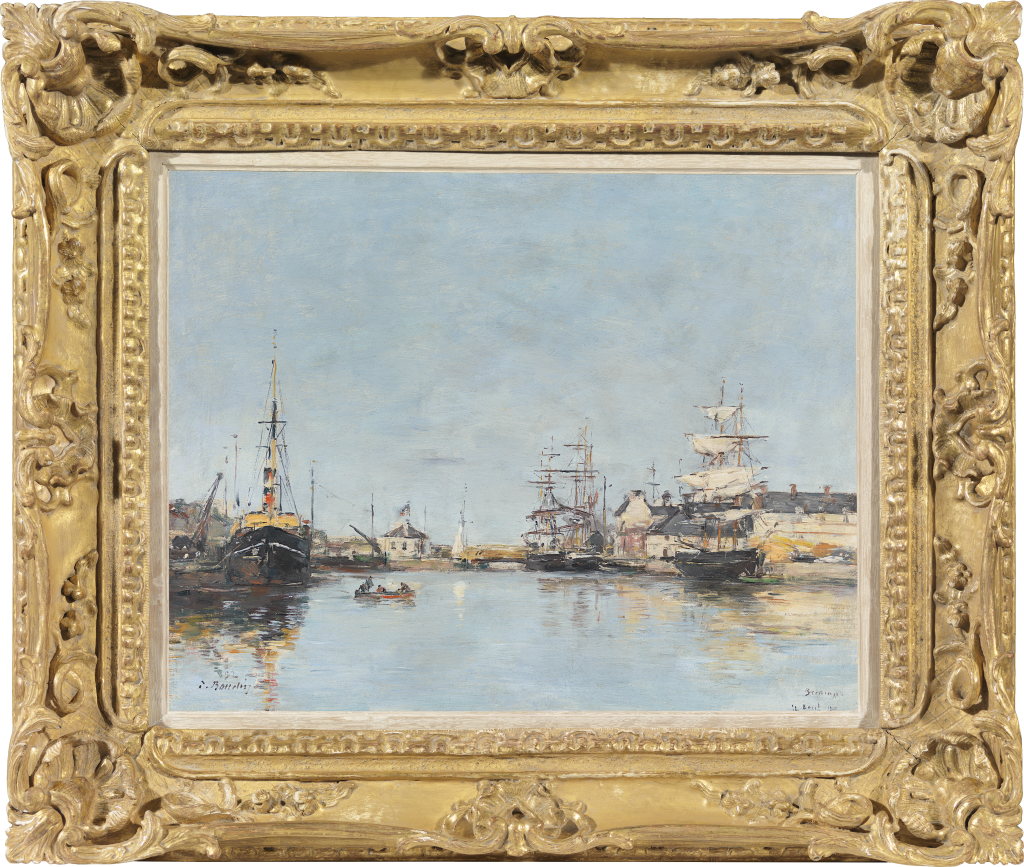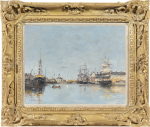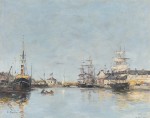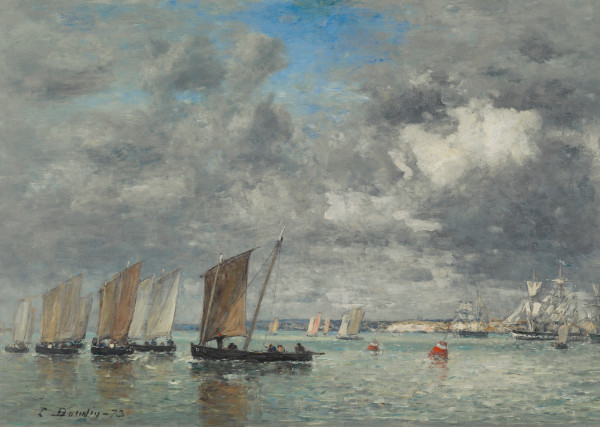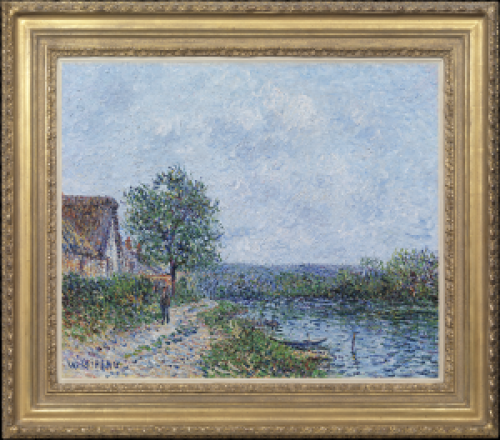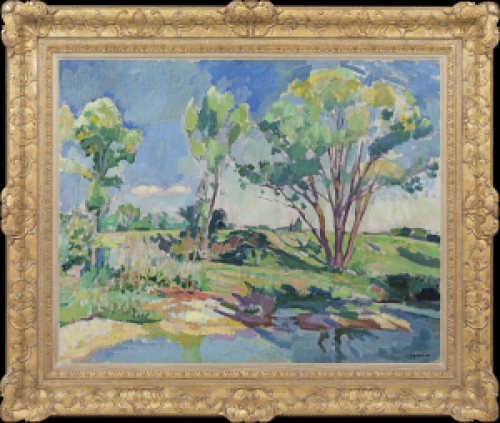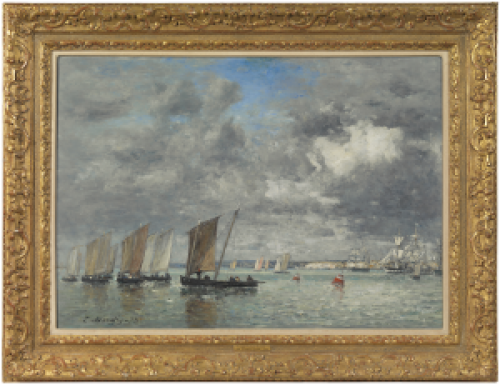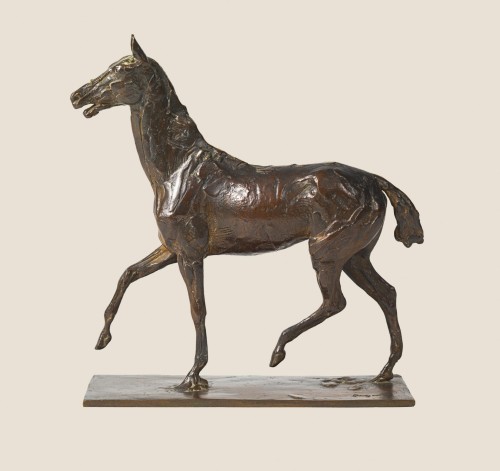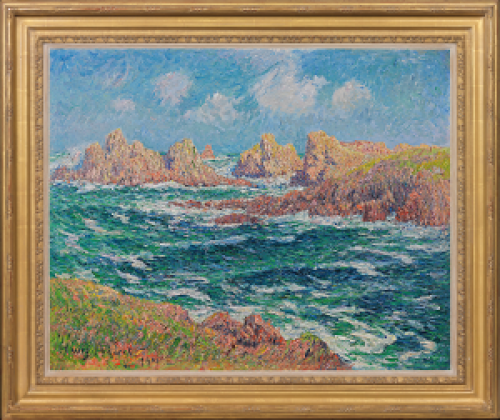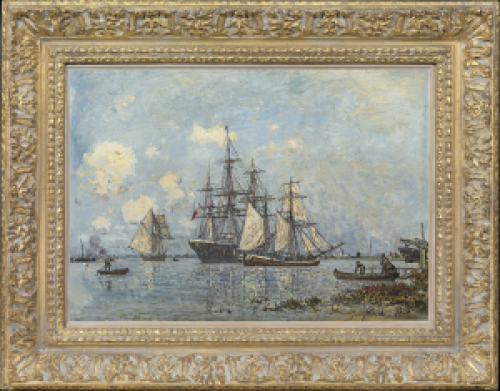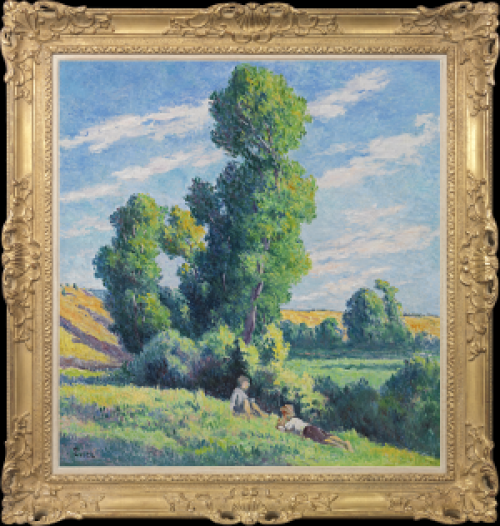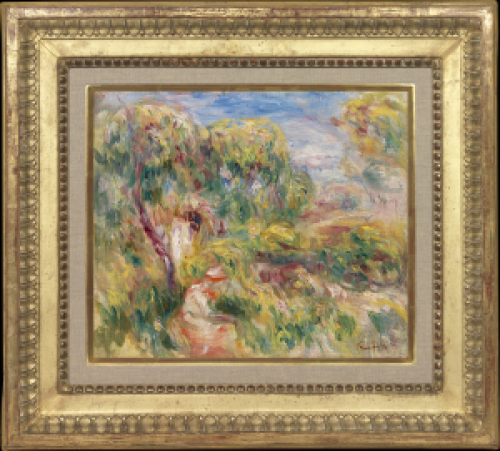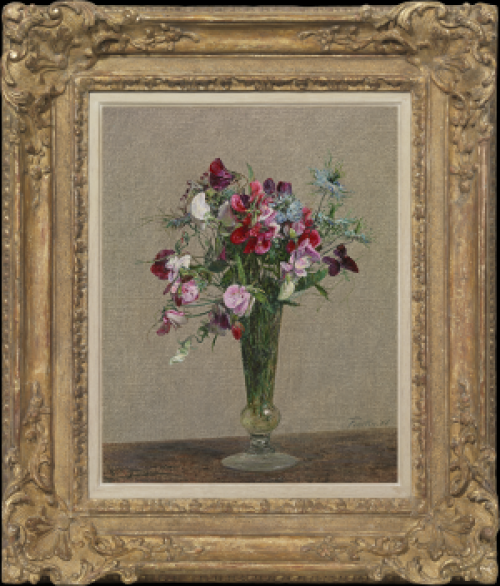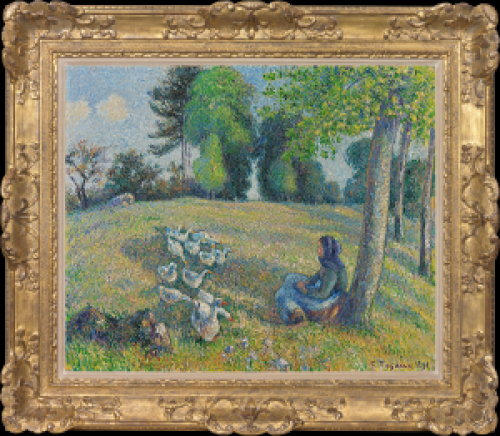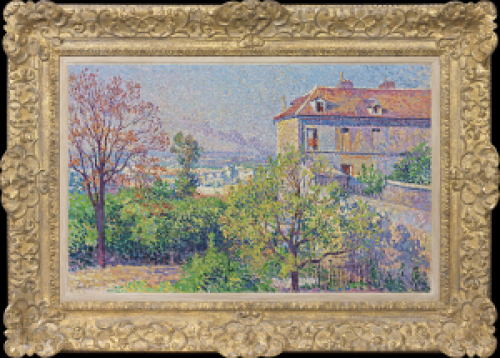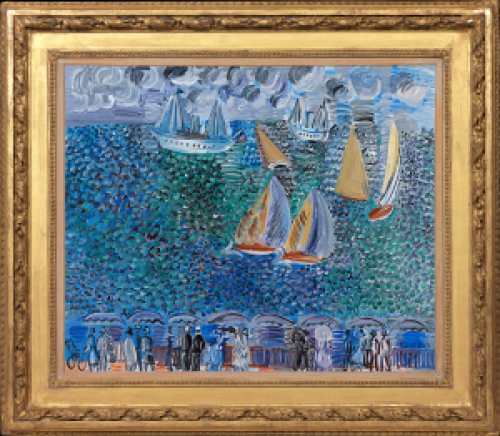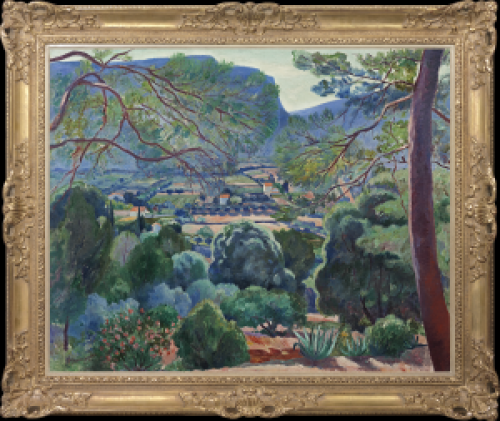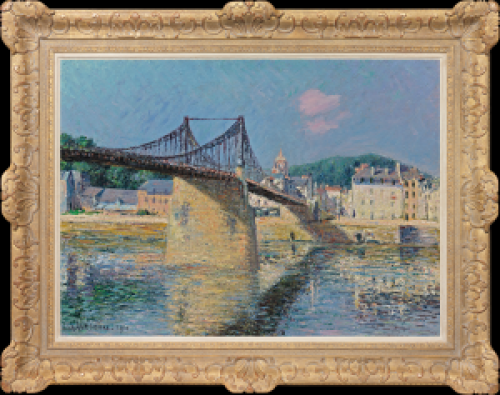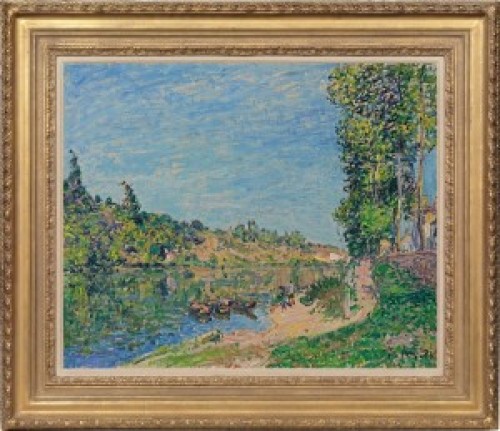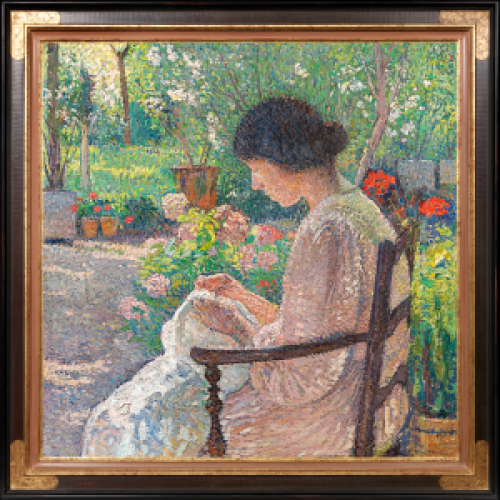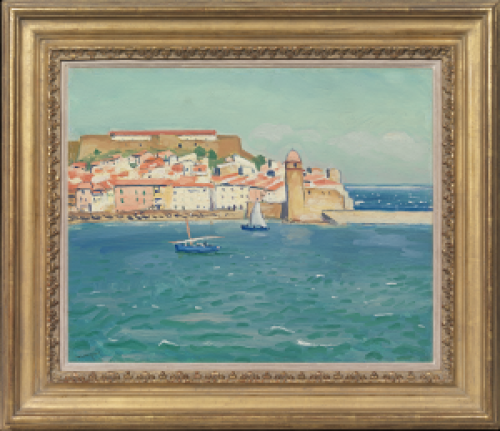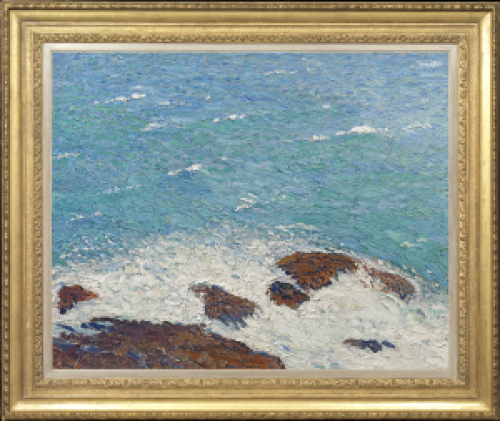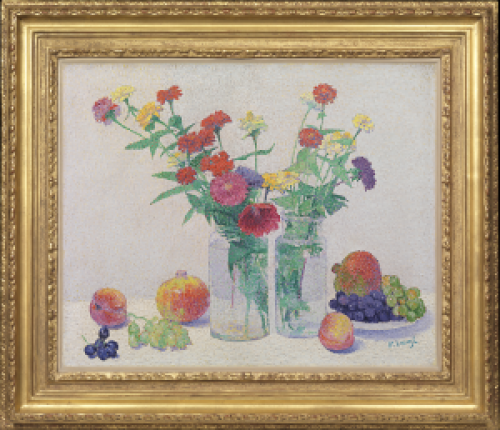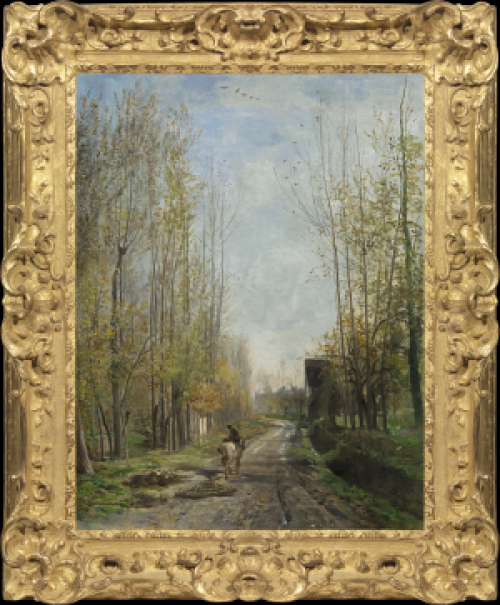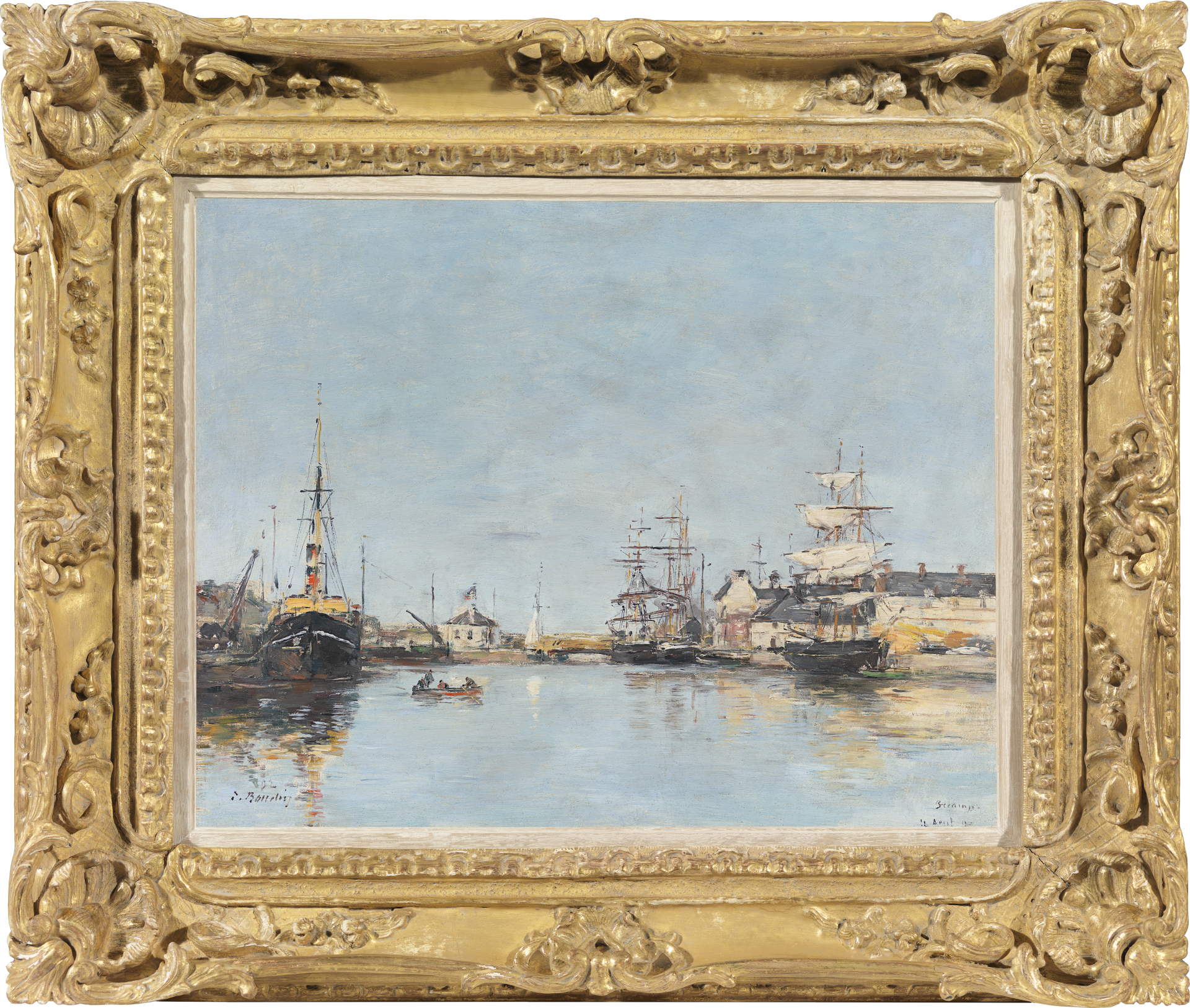EUGENE BOUDIN
Honfleur 1824 - 1898 Deauville
Ref: BT 233
Fécamp, le bassin
Signed lower left: E.Boudin; inscribed and dated lower right: Fecamp/12 Aout '92
Oil on panel: 12 ½ x 16 in / 31.8 x 40.6 cm
Frame size: 20 x 23 in / 50.8 x 58.4 cm
Provenance:
Mme Delphine Ingres, wife of Jean-Auguste-Dominque Ingres, Paris;
her sale, Hôtel Drouot, Paris, 10th April 1894, lot 11;
Private collection, France;
Hôtel Drouot, Paris, 12th June 1964, lot 46
Private collection, France
Richard Green, London, 1997;
Mr and Mrs Hewitt, USA
Literature:
Robert Schmit, Eugène Boudin, Paris 1973, vol. III, p.127, no.2910, illus.
Eugène Boudin is best known for his distinctive beach scenes depicting the Normandy resorts of Trouville and Deauville, a motif which he explored with great subtlety from the early 1860s to the mid-1890s. Boudin was born in Honfleur, the son of a sailor, so the sea was in his blood. After studying in Paris from 1847 to 1854, he returned each summer to his beloved Normandy coast, sketching and painting from nature. Winters were spent in his Paris studio preparing works for exhibition.
By 1892, when this painting was made, Boudin was well established and revered as an artist: he was awarded the Légion d’Honneur that year. By this period he had moved away from painting fashionable holidaymakers on the beach to explore the Normandy life that he had known from childhood, the working ports. Fécamp, at the mouth of the river Valmont about thirty-five kilometres north-east of Le Havre, was famous throughout the nineteenth century for its cod fishing fleets, which made the long journey to the cod banks of Canada.
In this painting Boudin depicts Fécamp’s bassin with a group of sturdy three-masters and smaller vessels. His flickering brushwork, which describes the intricacies of sails, masts, yards and rigging with great brilliance, is influenced by the younger generation of Impressionists whose mentor he had been. Boudin’s early beach scenes employ strong local colours. Here Boudin aims for the harmony of a more subtle palette: the gentle, cloud-flecked blue of Normandy coastal light, white houses and sails, with touches of bright red and yellow on the shipping. He avoids the anecdotal quality of a bustling port. Here all is dreamily quiet, the water millpond-calm and the only overt human presence a boat with three fishermen being rowed across the water.
EUGENE BOUDIN
Honfleur 1824 - 1898 Deauville
Eugène Boudin was one of the most important precursors of the Impressionists, with his emphasis on working directly from nature and free, naturalistic brushwork. His ‘Crinolines’, depicting fashionable holidaymakers enjoying the beaches of northern France, ushered in a new genre, but he was also renowned for coastal and harbour scenes.
Born in Honfleur, Boudin was the son of a harbour pilot and bred to the sea, working as a cabin boy for his father in his boat Le Polichinelle. After a brief period of schooling, in 1835, he worked with a stationer and framer who displayed the work of artists, then set up his own stationery and framing business in 1844. Boudin’s clients included Thomas Couture, Eugène Isabey, Jean-François Millet and Constant Troyon, all of whom had an influence on his efforts to draw and paint. In 1847 Boudin went to Paris to copy Old Masters in the Louvre; he was particularly impressed by the seventeenth century Dutch school and by the Barbizon painters. In 1851 he was awarded a three-year painting scholarship by the city of Le Havre. He drew his subjects from the Normandy and Brittany coasts. In 1858 he met the young Claude Monet, who had grown up in Le Havre, and stressed to him the importance of making oil paintings directly from nature to capture the constantly changing beauties of the landscape. Boudin and Monet went on painting expeditions together, especially at the Saint-Siméon farm near Le Havre.
Boudin made his debut at the Salon in 1859, where his work was admired by Charles Baudelaire. He befriended Courbet, Daubigny and Corot, who heralded him as ‘the king of the skies’. Paris-based in the winter, Boudin spent his summers on painting tours around the coast of Le Havre, Honfleur and Trouville, inspired by the elegant society that flocked to the burgeoning seaside towns and by the busy maritime traffic. At Trouville in 1862 he met Johan Barthold Jongkind and, influenced by his boldness of technique, adopted freer brushwork and a brighter palette. The following year he married a Breton woman, Marie-Anne Guédès.
Boudin made several journeys to Belgium and The Netherlands, initially to shelter from the Franco-Prussian War (1870-71). From 1892 to 1895 he visited Venice, making subtle, atmospheric and highly individual views. He also painted in the south of France at Antibes, Villefranche and Beaulieu, where he stayed in the 1890s for the health benefits of the mild winter climate. Boudin exhibited at the Salon from 1863 to 1897 and participated in the First Impressionist Exhibition in 1874.
From the 1870s Boudin enjoyed increasing financial security. In the 1880s he was taken up by the influential art dealer Paul Durand-Ruel, the champion of the Impressionists. Durand-Ruel organised exhibitions of his pictures in 1883, 1889, 1890 and 1891. In 1892 Boudin was awarded the Légion d’Honneur. He died in Deauville in 1898.
Works by Eugène Boudin can be found in the many museums worldwide including The National Gallery of Art, Washington DC; The Metropolitan Museum of Art, New York; The National Gallery, London; Musée d’Orsay, Paris; Musée du Louvre, Paris and The Hermitage, St Petersburg.

